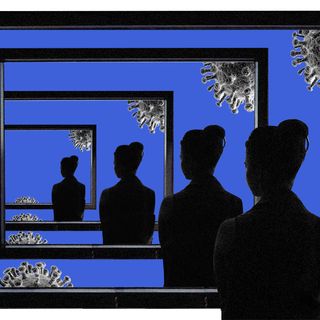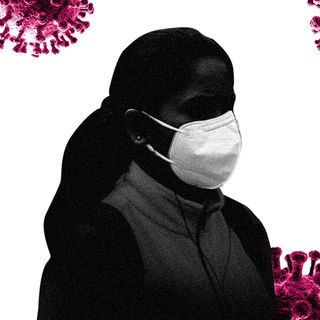
The Government Has Called For a Vaccination Festival, but What Are We Celebrating?
Against the backdrop of shortages and vaccination center closures, the new campaign feels like an exercise in marketing.

There’s little glamor around the Covid19 vaccination drive, a process that is marred by supply shortages and chaos. To manage perception, the government announced yesterday a four-day-long tika utsav to boost vaccination and avoid wasting doses.
It took a minute to check that nothing was lost in translation, but a tika utsav means exactly that — a vaccination festival. The Prime Minister, in a discussion yesterday with chief ministers about the severesecond wave of Covid19, suggested the novel campaign, slated to be held between April 11 to April 14; in the same session, he chided state leaders for becoming “lazy” and reiterated that young people will be deprioritized from getting the vaccine. Chief ministers this week had urged the government to reduce the eligibility age to widen vaccine coverage, as a way to address the worsening health crisis. But the Prime Minister noted yesterday that “this thinking” was not correct.
Arguably, a vaccination drive is laudable; encouraging people to get the vaccine, warning them of rising cases, pushing the importance of curfews and restrictions, asking states to conduct more tests — these are positive efforts. “There is a need to work on war footing again to fight Covid-19,” Prime Minister Modi announced. “Despite all the challenges, we have a better experience, resources, and a vaccine.”
Then why does it all feel a little jarring?
States such as Odisha, Chhatisgarh, Maharashtra, Haryana, Andhra Pradesh, and Telangana had sounded an alarm earlier this week about a potential vaccine shortage. Several media outlets yesterday reported something similar: vaccine centers across states were shutting down, citing low supply; Odisha had to close 700 centers, impacting thousands of people. But the central government, responsible for dispersing vaccine doses to individual states, dismissed these shortage claims as shameful attempts at politicizing the crisis. It released data around disbursement and confirmed earlier today that vaccine stocks are now replenished.
Yet some people have received news of their vaccine appointments getting canceled; others worry whether they will get their scheduled second doses; and most feel a sense of uncertainty amid tightened restrictions and reports of depleting vaccine supply.
The make-over from vaccination “drive” to “festival” feels eerily similar to last year’s morale-boosting exercises, when the government encouraged everyone to bang plates and light candles at the same time of day. The campaigns, then and now, are announced when the ground is sizzling hot with a dangerous pandemic wave. To critics, these gestures seem like an attempt to distract people from more urgent topics, like the need to invest in healthcare infrastructure instead. “Ringing bells from a balcony will not save us from what lies ahead — what will save us is the realization that health care cannot be left to the whims of a rapacious private sector but rather is a public good and the government’s job,” Radha Khan, a social sector consultant, wrote in Scroll.in last year.
Others have been quick to point out that strategies such as these are great marketing strategies, but may not be the best course of action during a pandemic. But an interesting observation can be made about the government’s communication during the lockdown, which has followed an eerily similar pattern: it gives people a date, a glossy name, and an agenda to be completed within the time frame. Anything to keep them occupied, a cynic would surmise. Framing and spectacles are arguably one of the key things in peace times and during a pandemic. In the book The Society of the Spectacle, Guy Debord argues that spectacles are “instruments of unification,” and even gratitude through such spectacles requires a language, time, and place of expressing itself. Suraj Gogoi, sociology scholar at the National University of Singapore, noted in an article that the government had ended up using rituals during the crisis “to create a ‘society of spectacle.'”
India has prided itself on launching the world’s biggest vaccination drive, vaccinating an enormous number of people, approving homegrown vaccines, even exporting vaccines to other countries in need. Vaccination certificates carry a photograph of the Prime Minister with an uplifting message: “Together, India will defeat Covid19 — Prime Minister Narendra Modi.” Analysts were quick to link this with the idea of a personality cult emerging around India’s storied leader.
The specter of a festival amid the broader, uncertain backdrop, seems to transform the grim urgency of a pandemic. But one wonders what it is we’re exactly celebrating. It will take 2.4 years to vaccinate 75% of India’s population at the current rate — longer if stalled supplies continue. Concerns about India’s second wave have crossed national borders, each day records an all-time-high number, thousands have died, millions have disproportionately suffered. Perhaps, we’re taking note of our resilience and strength. Perhaps, we’re adulating our government leadership.
You can always count on the government to put on a brilliant show.
Saumya Kalia is an Associate Editor at The Swaddle. Her journalism and writing explore issues of social justice, digital sub-cultures, media ecosystem, literature, and memory as they cut across socio-cultural periods. You can reach her at @Saumya_Kalia.
Related


It Feels Like April 2020 All Over Again. This ‘Been There, Done That’ Vibe Is Called Déjà Vécu
